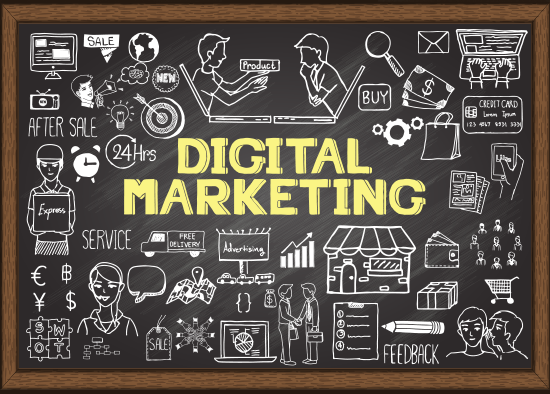The blog from Wisetiger.
Insight, ideas and informed comment. We've earned our stripes... www.wisetiger.co.ukRecent Posts
- Measuring bricks with bits: analytics for the real world
- Learning to love the robot: why you should automate your marketing
- The Essential EU GDPR Guide
- Mobile Killed the Television Star | Wisetiger
- Is Native Advertising a Good Thing? | Wisetiger
- 7 Web Design Trends for 2017 | Wisetiger
- Digital Marketing Trends for 2017
- Mobile is the best channel for targeting students
The blog from Wisetiger.
Insight, ideas and informed comment. We've earned our stripes... www.wisetiger.co.ukSearch stripey
Categories

Digital Marketing Trends for 2017
The New Year is upon us! Between the prosecco hangovers and stale mince pies, what better time for a dose of professional reflection? When the cinnamon crust has cleared from our eyes and we resolve to up our game in the 12 months ahead, what digital marketing trends should we be looking out for?
Organic social Media
After pumping cash into paid social the last few years, marketers are returning to organic social media. Why? Two reasons – users are getting as blind to paid social as they are to other forms of advertising, and consumers increasingly choose brands based on experience as much as or more than because of product. That means that old watchword of early social marketing is creeping back in: engagement.
Social is now increasingly used as a front line in the same way phone and email have for years. This is truer for big brands than small businesses, but it will inevitably filter down. Simply broadcasting is not enough. It never was, but more so now. Social in 2017 will require active monitoring and response, and a willingness to view Facebook and Twitter as part of the customer service mix, on a par with traditional channels, alongside a platform for your brand voice.
Personalisation
Sure, the whole internet has been moving towards personalisation for years – from Amazon’s product recommendations, to the PPC ads that stalk you round your favourite news sites – but we’re expecting it to go even further in 2017.
Personalisation is extending to everything. Chat options are increasingly common on websites, for personal guidance alongside algorithmically generated content and product recommendations. Automated emails reflect your activity on the site – rather than generic marketing triggered by a brute visit – and one-to-one social communication is the new normal.
Users are increasingly expecting everything they experience online to be personalised to them, and businesses that confront them with a one-size-fits-all experience will be passed over in favour of businesses that tailor every interaction.
Native Advertising
Native advertising – where brands place content in willing publications for cash – has already been hitting The New York Times, Forbes, and Buzzfeed but expect it to spread further and wider. Early tests by big brands have found native advertising to be more effective than traditional methods, and a tidy defence against ad-blindness (of both human eyes and browser-based ad-blockers).
It’s already prompted concerns regarding conflicts of interest and misleading readers, but early surveys suggest consumers prefer native advertising to pay-per-click and display ads – as well as providing a powerful tool for marketers to frame their products in more cohesive narratives, much as they do in their own content marketing.
New Wave Analytics
Marketing pundits are expecting analytics to get even more granular in 2017. Partially because companies like Facebook and Google are admitting their numbers don’t necessarily add up – necessitating new products to take their place – and partly because executing all this extra personalisation and automation requires it.
Of equal importance, as mobile has overtaken every other channel for interacting with customers, it is now possible to measure every single point of the customer journey in a hitherto impossible fashion. As such, fully data-driven marketing is becoming more of a reality, and brands would be foolish not to take advantage of that.
Larger companies are already hiring internal ‘data scientists’ to create bespoke analysis and measurement tools, but expect these to filter out in more third party tools as time goes on.
Customer Experience Marketing
Customers increasingly expect experiences. This means two things: 1. Presenting products as experiences (see Buick’s native advert on Buzzfeed for how to sell a car as a pleasant Saturday with friends) and 2. Crafting a customer service experience.
Customers now value their interaction with a brand as much, if not more than, the transaction itself. This means every single engagement counts towards their loyalty with you – every phone call, email, social media response. Brands are beginning to realise this, and as such are incorporating every customer facing employee into their customer experience, and therefore marketing, plan.
It’s time to consider every employee as a brand ambassador, and to make them aware of that. They don’t have to be front-line salespeople, they don’t have to be customer service executives – if they even send an email to a customer, they’re part of that customer’s experience with you; and how that interaction plays out should be part of the marketing plan.
Holistic Marketing
Taken together, 2017 looks like the year digital marketing gets truly holistic. The year brands realise there is no real distinction between digital and analogue in their customer interactions. The year brands realise they are crafting a customer journey at every point from brand awareness to transaction and beyond. The year brands realise they can use technology – automation and analytics – to make their journey personally tailored to that customer. And that to not do so is to lose out to a competitor that does.
Andy Shaw
©2005-2014 Wisetiger









Start the conversation